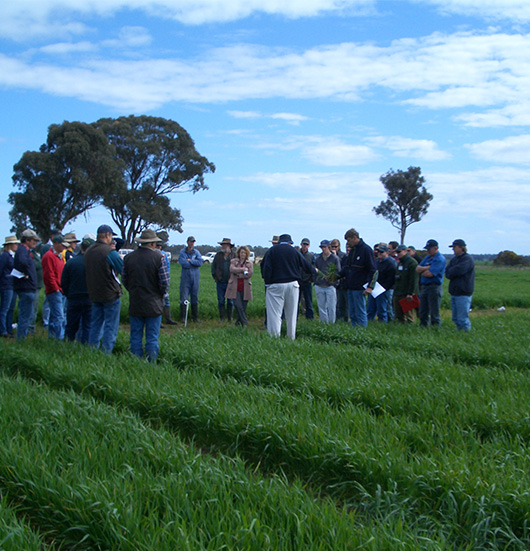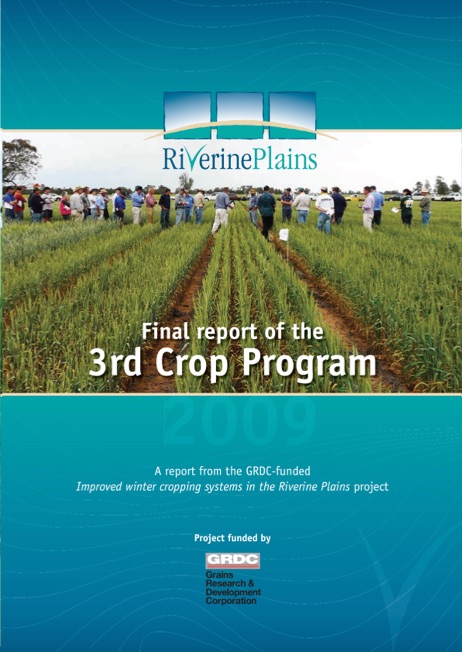Results from the 3rd crop program

Publication date
07 Jan 2009
Publication partner
This publication was supported by the Grains Research and Development Corporation.
LEARN ABOUT OUR INVESTIGATIONS INTO WHEAT AFTER WHEAT AFTER CANOLA (THIRD CROP)
The 3rd crop trials aimed to investigate if wheat after wheat after canola was a better option than growing cereals such as barley or triticale, compared to another canola or alternate crop.
As part of the Improving winter cropping systems in the Riverine Plains project, crop comparison trials were carried out from 2004 to 2008 to compare the yields of wheat, triticale and barley (2004 to 2008) and canola and lupins (2005 to 2008) in the one experiment.
Maximum yield experiments for wheat (after wheat), triticale and barley were conducted from 2005 to 2008 to investigated the circumstances that would maximise and optimise cereal yield.
Fungicide experiments for wheat (2006–2007) and barley (2005 to 2007) also tested fungicide alternatives and timings to quantify when yield responses could be obtained.
A trace element experiment (2007) tested for responses on a common soil type in northeast Victoria.
This publication summarises results from the above trials.
Key messages
The project was predominantly carried out during drought, which is likely to have reduced responses to inputs that would be seen in more ‘normal’ years. Despite this, a number of important findings were obtained from this work, which are summarised below:
- Wheat after wheat can be a viable alternative, particularly to growing alternate crops such as lupins and canola.
- To maximise yields, wheat after wheat requires protection from root diseases and possibly more nitrogen than would be required by wheat after canola or lupins.
- Using barley or triticale in the crop rotation is a more economic option than a higher proportion of canola or lupins.
- Barley and triticale require inputs similar to wheat to yield near their potential. All cereals respond to similar amounts of nitrogen up to 80 kg/ha, and fungicide during good seasons. All cereals respond similarly to nitrogen during dry years.
- Barley gave a significant yield response to fungicide during dry years, whereas wheat and triticale varied in their response.
- Barley has significantly higher yields than other cereals during dry years.
- Barley grain quality is not reduced by adding too much nitrogen until the yield is maximised by the addition of nitrogen and fungicide.
- Wheat seemed to respond to 5–10kg/ha of phosphorus (P) at high soil test levels (80 milligrams per kilogram Colwell) during dry years. This is not recorded in all phosphorus experiments on soils with high phosphorus levels.
- Crops with low initial tiller numbers can be manipulated to produce high grain yields.
Learn about the performance of different crops following canola and wheat in the Riverine Plains from 2004 to 2008.
NEWS
Discover unique perspectives on agriculture from across the Riverine Plains.
-
Livestock
-
People
-
Grains
-
Sustainability

